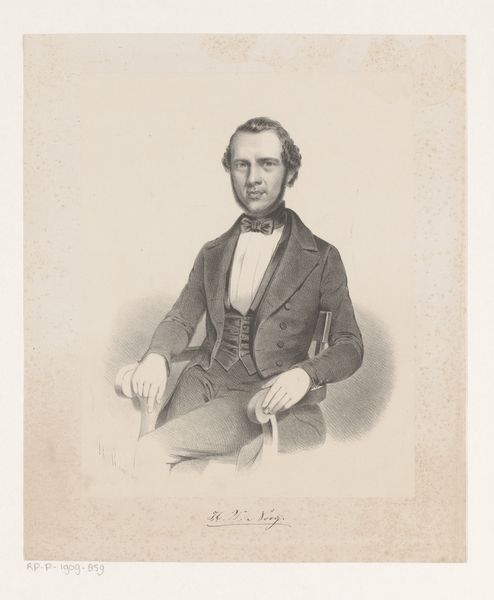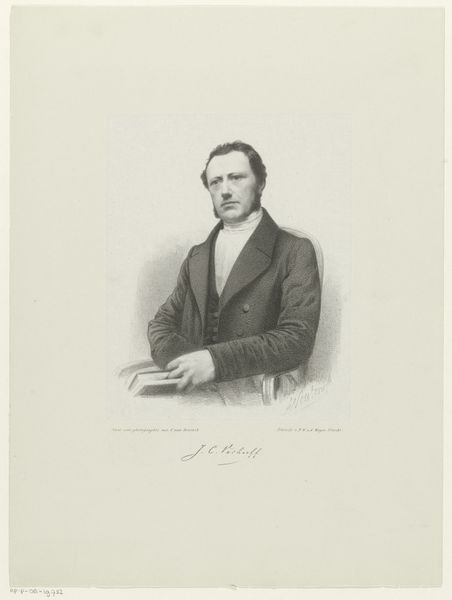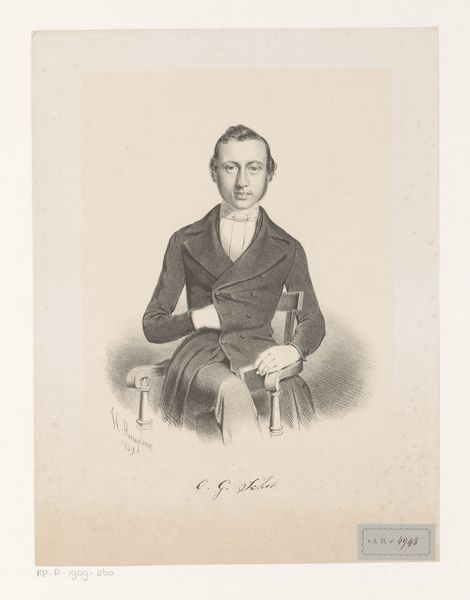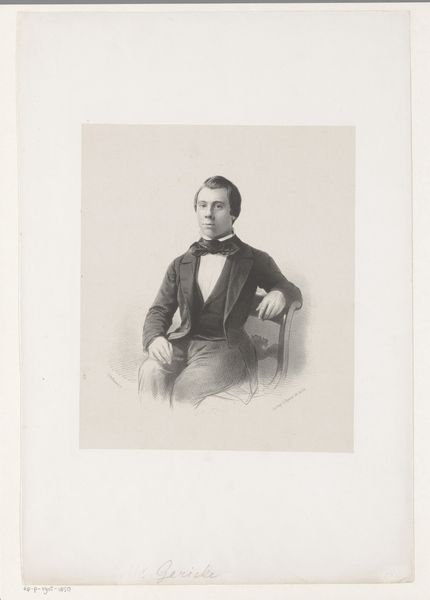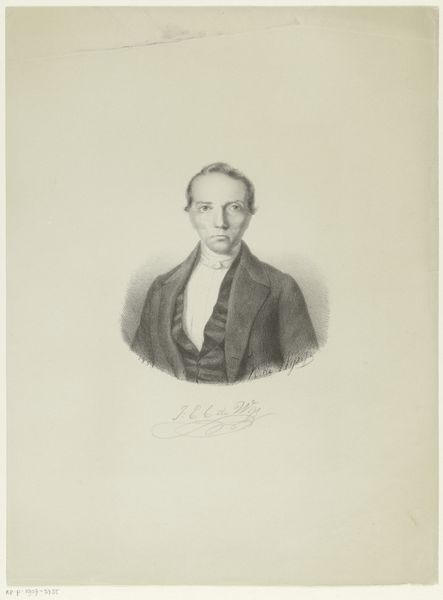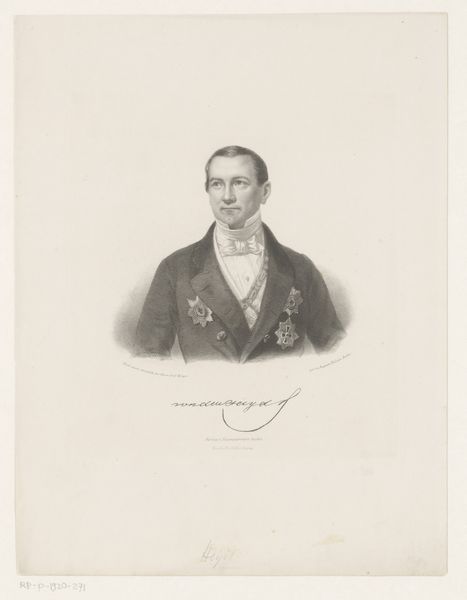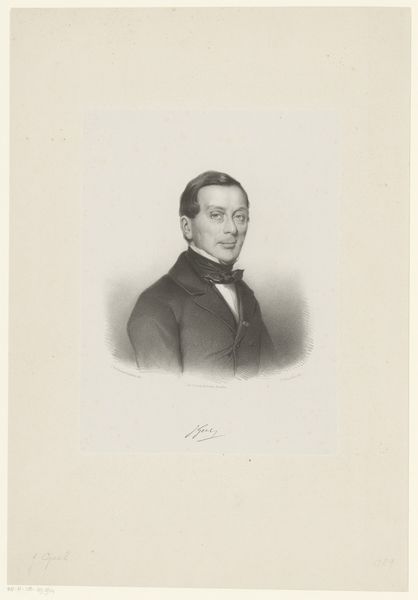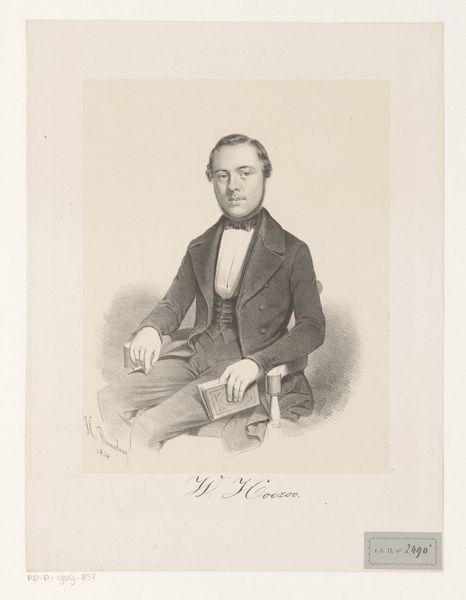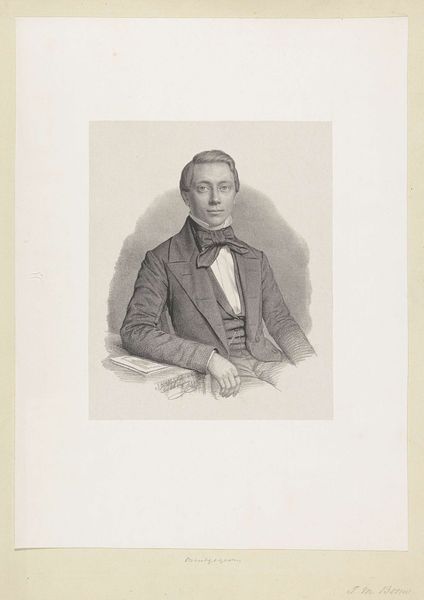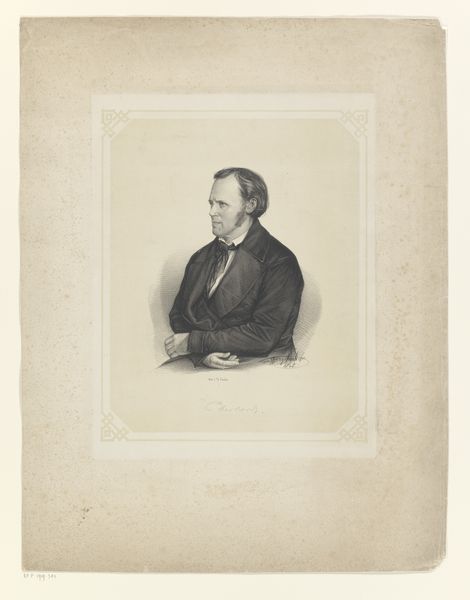
drawing, pencil
#
portrait
#
drawing
#
caricature
#
pencil drawing
#
pencil
#
portrait drawing
#
academic-art
#
realism
Dimensions: height 326 mm, width 253 mm
Copyright: Rijks Museum: Open Domain
Curator: Hendrik Ringeling's "Portret van Justus Rinia Petrus François Gonggrijp" created in 1849, a meticulously rendered pencil drawing, presents an interesting study of its subject. Editor: He seems rather…buttoned up. Very formal and posed. The monochrome adds to the severity. Almost like a wanted poster, albeit a very polite one. Curator: The pencil work is really quite impressive, isn't it? Note the varying densities to suggest the fall of light across his clothing and face. It would be worthwhile exploring the type of pencils available to Ringeling during that time. Were they mass-produced? Who supplied them? Editor: Beyond the technical skill, I’m struck by how much this reflects the societal constraints placed on men of Gonggrijp's station. That constricting waistcoat, the rigid posture – it speaks of privilege, certainly, but also a lack of freedom in self-expression. How much did class dictate the style and making of the artwork? Curator: Absolutely. Considering Ringeling was primarily known as a portrait artist for the bourgeois, one can imagine the market pressures guiding material choices and stylistic approaches. The consumption of portraiture reflects larger economic realities. Editor: I am intrigued about Gonggrijp himself, beyond his formal presentation. His name suggests Dutch heritage during a period of increasing nationalism. What roles did people like Gonggrijp play in solidifying national identity through social structures? How do their portraits serve to perpetuate or perhaps challenge that identity? Curator: A compelling consideration. The materiality, from paper production to pencil lead sourcing, involved a whole network of often-unacknowledged labour. Even the creation of the image served a purpose of establishing a sense of identity. Who benefits, economically and socially, from that transaction? Editor: And how does this specific portrayal engage with artistic movements? While it nods toward realism, it does little to acknowledge the sitter's interiority, flattening the complexity of human existence into something acceptable for public display. Curator: Exactly, understanding the raw material is essential. Even the artist's workshop. And the cultural norms that dictated those commissions and tastes. Editor: Ringeling’s technique does show a commitment to rendering Gonggrijp, reflecting back the aspirations, or perhaps, the demands, of a certain socio-economic positioning. Curator: Indeed. Examining such portraits as commodities allows us to rethink the art historical narratives often associated with Romanticism. Editor: Thinking through the identity and social pressures makes this drawing more vivid, somehow more human despite itself.
Comments
No comments
Be the first to comment and join the conversation on the ultimate creative platform.
